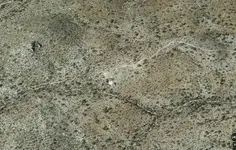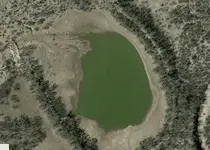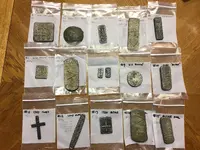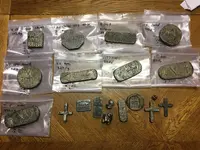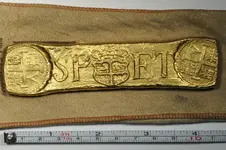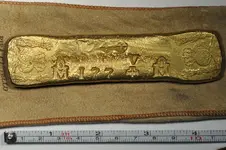Thanks Joe, and last point first, there may have been some miscommunication(s) about health problems here. Beth had some throat surgery for scar tissue due to acid reflux. I had some minor back surgery. The thing which was posted on FB about supporting a cancer patient had been posted for a friend that has a friend with cancer, in support - this led to a string of well wishes and miscommunications in the belief that either Beth or myself has cancer or some other terribly serious health condition. This is not the case, the thing on FB was for support for a friend of a friend not either of us, and we do have a relative that has just completed treatments for cancer as well but all is well here.
Also thank you for that kind offer, I would sooner read it in your library however! :cheesy grin: I would point out that these authors, for all their respective credentials, are modern authors, and were clearly working on the history of the region, not focused on any Jesuit mining activity. In fact I am not aware of any historian that has done so. The only authors I know of that have researched the mining history of southern Arizona have attributed the earliest activities in mining to the Jesuit priests. We posted this in another thread some time ago. I suppose we could re-hash all that, but it would serve no purpose; on the other hand, as your sources are claiming there were thriving Spanish mining communities in southern Arizona/northern Sonora as early as the late 1690s (Kino's period) I would like to see some documentation of this. Surely there will be records of any Spanish operating mines in Pimeria Alta in the time period, as the Spanish were fairly good records keepers and mining claims were frequently registered (denounced) in order to obtain title to the mines. This is not the case with every mine, as with the Planchas de Plata, there was a short lived "rush" while the surface deposit lasted, and when it played out the settlement vanished. Also your point about a Spanish mining activity centered on Tubac, is not at odds with what I posted. It even makes perfect sense, for the only safe area where a Spanish prospector could operate would be quite close to the presidio where troops are stationed for protection. To venture further away would be very dicey to say the least. So what miners were operating in the Santa Ritas, or around Arivaca?
Nentvig makes it fairly clear that mines which were being operated by Spanish and or Mexicans, are listed in his description of the region, Rudo Ensayo. Other mines clearly linked to the missions and visitas are listed with the missions and visitas, which only makes sense. Nentvig even made the chapter title describing the Spanish mining settlements quite clear,
Mining Camps and Settlements of Spaniards
(for the readers whom do not post, Rudo Ensayo is online, the chapter just referred to is at:
Settlements
I can save you the time to re-read it, the only settlement of Spaniards within what is Arizona as of the date when Nentvig penned this description is at Tubac, which is described as a military presidio, no mining activity linked to it. As Nentvig was alive and writing at the time period we are discussing, I would give his testimony a greater weight than any modern author or researcher.
Anyway thanks again for the kind offer, and thanks for the good wishes. All is well, other than a lack of rain, both of us are pretty well on the way to recovery if not 100% yet. I hope the same situation is true for you as well. If you know of any documentation we can examine that supports the Spanish mining settlements and trade with the Jesuit missions as early as Kino's time of course that would still be most welcome. I am sure you could find many more modern authors that dismiss Jesuit mining activity entirely. Yet what Spanish were supposedly mining in Arizona, in 1690, and not living at Tubac? Where are the records of their mining production? Other areas which had Spanish mines operating, have left us some records of their production.






